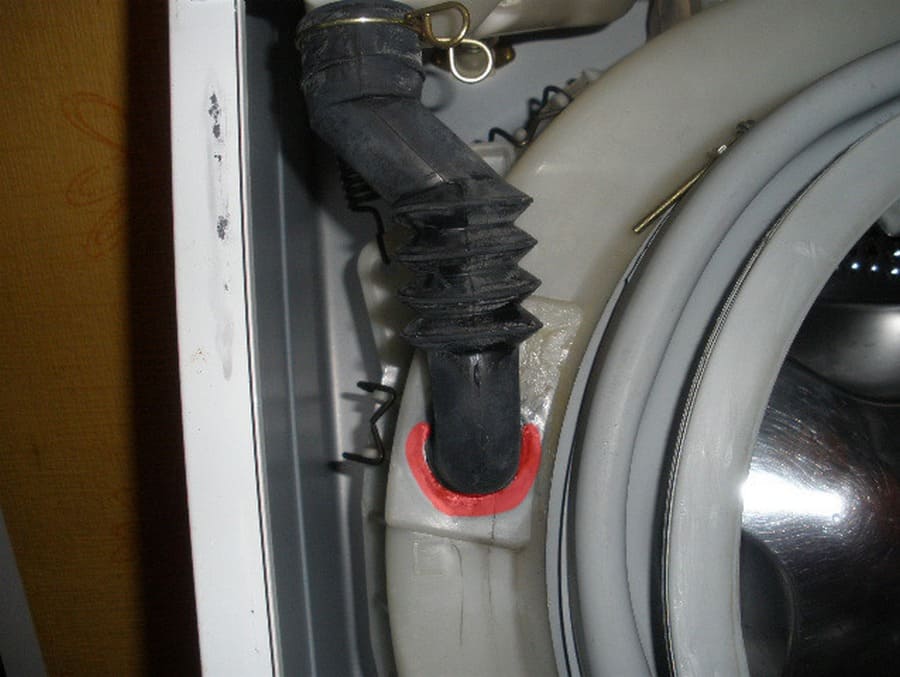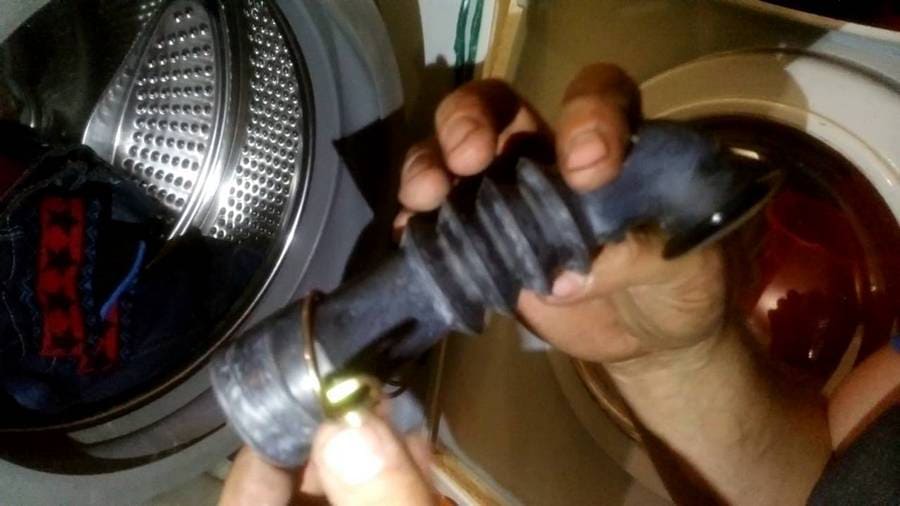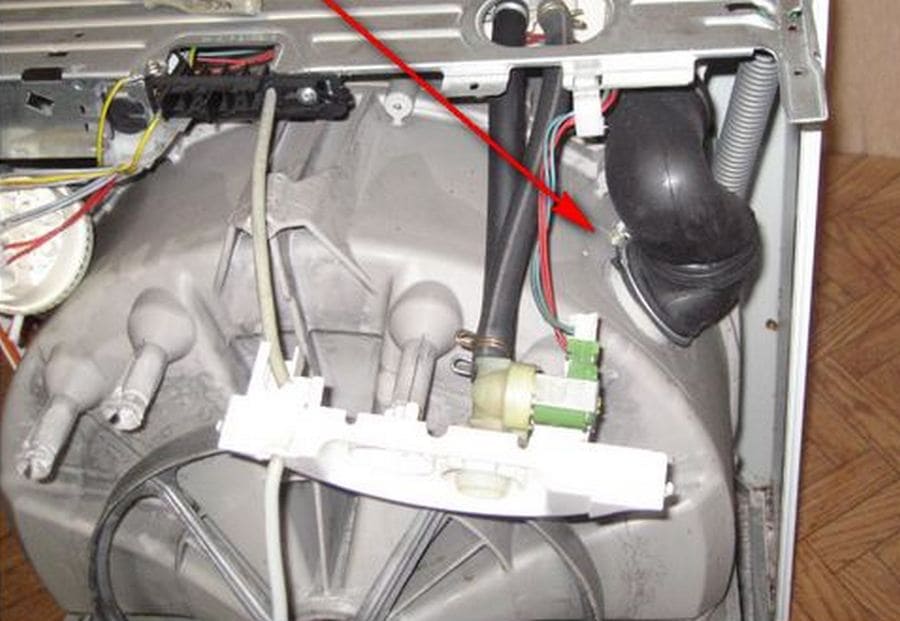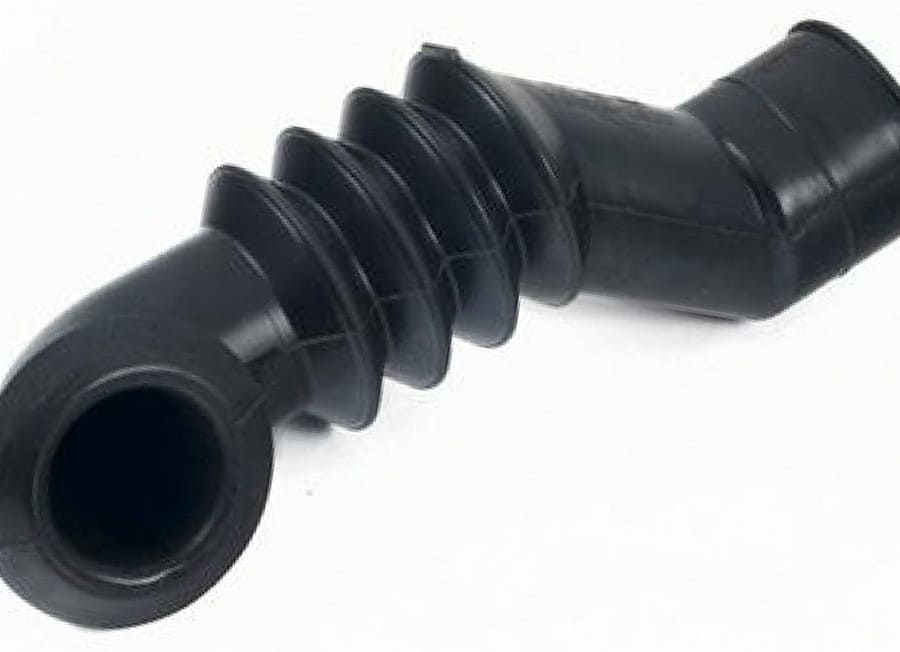 No matter how reliable a washing machine is, one day it may leak. And the trouble is that it is not a fact that at this time the owner will be next to her and turn her off. This means that it will continue to flow and can flood not only its owners, but also the neighbors below. It is very important to carry out preventive measures on time. But this is not what our article is about, so we will try to figure out why the washing machine is leaking from below, what the consequences are and how to repair the installation.
No matter how reliable a washing machine is, one day it may leak. And the trouble is that it is not a fact that at this time the owner will be next to her and turn her off. This means that it will continue to flow and can flood not only its owners, but also the neighbors below. It is very important to carry out preventive measures on time. But this is not what our article is about, so we will try to figure out why the washing machine is leaking from below, what the consequences are and how to repair the installation.
Why might a washing machine leak?
Despite the fact that a huge puddle can confuse you, you should gather your thoughts and fix the problem that has arisen. First of all, you need to stop the machine, if it is in working order, disconnect from the power supply, remove the water and get things out.
Attention! Never get into trouble before turning off the power! Only after the plug is out of the socket can you start cleaning.
The next step is to limit the water supply. There are two options: turn off the tap through which the machine is supplied, or turn off the water in the entire house. Next, you need to drain the water that remains in the washing machine.This can be done through the drain filter located at the bottom of the device. Only after this can you begin to inspect household appliances.
There are many reasons why an automatic machine may leak from below. First, you need to visually inspect which part the water is flowing from.
Places where water leaks from the washing machine and faulty parts:
- Hose;
- Drain filter;
- Dispenser;
- Pipes in the machine body;
- Sealing collar;
- Drain pump or tank.
Determining a hose leak during operation or spinning is not always so easy. Only after a thorough inspection can you understand where exactly it is leaking. If it was the hose that caused the washing unit to leak from below, then it needs to be replaced. If the gasket at the junction with the body is damaged, it should be replaced.
There are situations when washing machine owners do not install the filter well enough. It is in these cases that the junction begins to leak. It’s quite easy to fix everything, as well as to determine the location of the leak.
When filling with water, the dispenser may also leak. If water leaks out after entering the washing machine, there is a high probability that the dispenser is malfunctioning. It can leak if large grains of undissolved grains get stuck in its grate. Also, the presence of large sediment and poor water quality can lead to leaks. And the last option is too much water pressure.
The pipes, unlike the hose, are not made from the highest quality materials. With prolonged use of the machine, they deteriorate, rot and holes appear in them, as a result of which the washing machine begins to leak from below. Typically, leakage in such a situation increases over time.
Often there is a leak in the cuff between the door and the body. Naturally, if the machine is top-loading, then such a problem simply cannot arise. The fact that the machine cuff is leaking in the installation can be understood immediately after starting work. When water enters the washing machine, water will begin to flow from the hatch. Often the seal bursts due to improper use or over time.
The drain tank or pump can also fail, although they do not look like parts that are subject to wear or aging. But do not forget that small elements often remain in clothing pockets, which fall into the pump or tank and damage them.
Methods for repairing a washing machine

The repair method depends on the cause of the breakdown and the part that needs to be replaced or restored. In most cases, it is almost impossible to carry out independent repairs, since the use of special tools and professional knowledge is required. But some problems can be fixed on your own.
If the hose of an LG or Ariston washing machine is leaking, you can replace it, but you can also repair it. To do this, you can use waterproof glue with a piece of rubber or electrical tape. The second option is not very effective, especially with strong water pressure. If the drain hose can still be repaired, it is better to replace the entire supply hose.
A malfunction in the form of a leak in the washing machine drain filter can be eliminated quite simply. To do this, you should take out the part and screw it on, but this time carefully so that a new leak does not occur. It is important not to break the thread, then the repair will be even more difficult and cannot be carried out at home.
A clogged washing machine dispenser needs to be cleaned. To do this, you should take it out, then clean it of dirt and return it to its place. You can check whether the dispenser is working after the next start of the washing machine. If water or foam leaks out again, you will have to have the washing mashine repaired. If the intake valve pipe is faulty, replace it with a new one. In this case, the place where the new part is installed can be treated with sealant. Washing can only be done after the material has completely dried.
The next option is a leaking cuff of the washing machine. Repairing the cuff is simply useless. It will break again in this or another place, and the washing mashine will again leak from below. Of course, there is an option to seal it using a patch with waterproof glue, but there is simply no guarantee that it will not leak again at the most inconvenient time.
Tank leakage is the most serious problem. It is almost impossible to fix such a malfunction on your own. Need professional help. As a rule, the tank has to be replaced because it cannot be repaired.
Replacing pipes yourself

This part is not the most reliable in a washing machine. Some people are not even aware of its existence and only encounter it when the unit begins to leak from below during washing. Today, the following pipes can be used in a washing machine:
- Jellied;
- Drain;
- Dispenser pipe.
Each of them plays its role and is an integral element of the system. The filler is located between the intake valve and the dispenser. Its function is to combine these elements. Water flows through it quite quickly and enters the powder receiver.
After this, the powder mixture with water enters the dispenser tube, which is necessary to connect the powder receiver and the washing machine tank. Next, the laundry is washed in the selected mode, and when the waste water needs to be drained, the drainage pump starts. It pumps water from the tank to the drain, passing through the drain pipe.
Each of these parts of the washing machine has a certain resource. The walls of the pipe are constantly subject to mechanical stress from water pressure, as well as various mechanical elements and scale. The higher the water hardness and the more mechanical impurities, the higher the likelihood that one of them will break and the machine will begin to leak from below. Of course, an important factor is the quality of the pipes.
Attention! Prolonged downtime of the washing machine also negatively affects the strength and elasticity of these parts of the washing machine. More often they tear under heavy load after a long pause in work. After which the washing mashine begins to leak from below.
The dispenser tube is prone to collecting and hardening deposits resulting from the use of low-quality powders. But most often it is the drain pipe of the washing machine that breaks.
The drain pipe takes on a large load from the following items:
- Buttons and cufflinks;
- Pins and hairpins;
- Coins;
- "underwire" bras;
- Toothpicks, etc.
If the washing machine is leaking from below, then most likely the problem is in the water drain pipe.
The process of preparing for repairs
How to proceed to prepare the washing machine to eliminate a leak from below:
- Shut off access to water;
- Remove the inlet and drain hose (the hose, not the pipe!);
- Place a cloth on the floor;
- Remove the washing machine dispenser;
- Remove the hose from the service hatch from below and use it to drain the water that remains in the system from the hatch;
- Remove the drain filter, clean it at the same time or replace it;
- Tilt and lay the washing machine on its side.
Completing all of the above steps will ensure safe and comfortable work. The water must be drained to prevent the board from flooding and, consequently, damage. For further work you will need a “–” screwdriver and pliers.
Checking and repairing the filler pipe

In order to find this element, you need to remove the top cover of the washing machine. This part connects the soda intake valve and the powder receiver. These elements are located in the left corner. Attached to the receiver and valve with large clamps.
Dismantling is carried out as follows:
- Using pliers, loosen the clamps and move them to the side. You must handle them very carefully so as not to break them.
- Holding the central part of the pipe, carefully remove it from the valve and receiver of the washing machine.
- After the inspection, clear any blockages, if any. You can use a bottle brush.
- If any defects are found, immediately buy a new one.
- Collection is carried out in reverse order.
Checking and repairing the dispenser pipe

This part of the washing machine can also fail, but this does not happen so often. Finding and replacing this element will be a little more difficult, but it can be done. First of all, you need to remove the front panel.
In many washing machines this is done as follows:
- The powder dispenser is removed. This procedure is performed differently in different models.
- The fasteners that hold the display panel are unscrewed.
- The bottom panel is removed.
- The rubber hatch seal is removed. But to do this, you need to get the wire clamp with a screwdriver. This should be done carefully so as not to damage the rubber.
- The next step is to remove the cuff of the washing machine.
- Unscrew the fasteners holding the lock;
- Disconnect the front panel of the case.
Thus, access to the dispenser is open. First of all, it is necessary to remove the fasteners that hold the pipe. Then you can disconnect the element by pulling the ends. Inspection of the tube will allow you to find out if there is a blockage. If not, then next you need to carefully inspect the element for damage.
How to clean the drain system
Now we will talk about the drain pipe of the SM. This element is exposed to the greatest mechanical impact, therefore it is the very first or one of the first to break. This element wears out quite often, as a result of which the washing machine leaks from below. But not everyone is able to change this part, even though access to it is often open.
In order to find and remove it, just put the washing machine on its side and the pipe will be visible from below. If the lower part is protected, as in Samsung or Bosch machines, then just unscrew the cover from below and the part will be in full view. This part has 3 connections.
Firstly, it connects to the washing machine tank, secondly to the drain pump, thirdly to the pressure take-off hose. To remove the part, just loosen the clamps a little. In rare cases, this element simply gets clogged. Usually it breaks and the washing machine starts leaking from below, so it is better to buy a new one right away.









